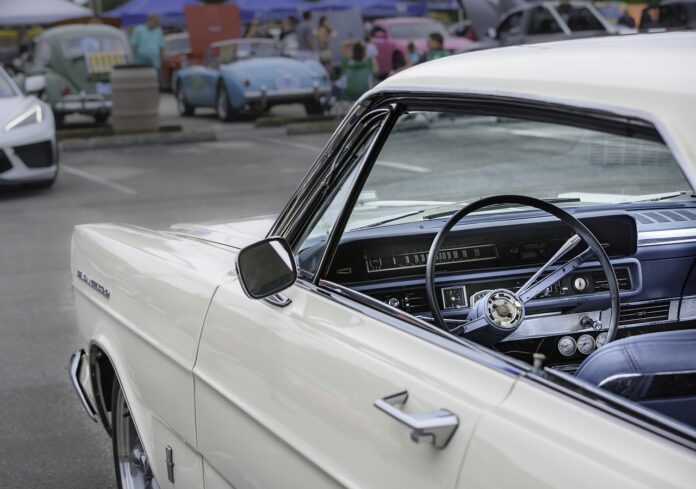The slightly fuzzy, somewhat overexposed photograph captures a carefree moment in my three-year-old brother Christian’s childhood. He’s wearing just a pair of shorts and a bewildered grin. His bare feet and shirtless body confirm what the one edge of 3½-inch square, black-and-white photo already reveals: it’s “Aug. 68.”
I might have guessed the year because right behind him is parked the “Blue Goose,” our family’s pet name for a used, blue 1961 Ford Galaxie my parents bought after my two older siblings, Richard and Peggy, began to drive. It looks more like a billowy summer cloud atop four black discs than fat feathered fowl.
The Goose sits on a patch of gravel next to our three-sided machine shed. My parents never parked it or the family car, a mid-1960s Ford station wagon, in the shed where some half-awake hired man might nick either on their way to the nearby Havoline oil barrels or, Holy Moses, clobber ‘em with a tractor or implement.
Despite the preventive parking, the Goose got cooked — mangled — by Uncle Honey, Dad’s machinery-bending uncle, one fall Sunday afternoon. It was a classic Honey hit: He simply plowed into the Goose’s passenger rear panel as he backed an 1850 Oliver and its semi-mounted, five-bottom plow out of the machinery shed and into the parked car.
There was no squawk, honk or alarmed gasp. In true Honey fashion, the sound of grinding metal and sight of flying chrome went completely unnoticed. Without so much as a glance back, Honey then kicked the 1850 into road gear and roared off to plow something else — telephone poles, cows, the heifer barn and maybe a stubble field.
There’s another car in the photo that captures the still-intact Goose: hired man Jackie’s super sweet, ‘68 Ford Fairlane 500. Like the Ford Mustang of that vintage, the car’s key design features were a very un-Jackie, very non-farm sloping fastback rear window and trunk that went downhill before sliding into its tail lights.
Jackie called the car “Turtleback” because the trunk lid, almost hidden in the smooth, downward sweep of the car’s rear, opened to reveal a cavern deep enough to hold a month of groceries or a week of firewood.
Quiet, purposeful Jackie, however, used it as a locked vault for his most necessary possessions–a well-oiled, 12-gauge pump shotgun, a pair of six-buckle overshoes, a rubber raincoat, and a week’s stash of unopened Velvet tobacco cans and enough cigarette papers to roll the Velvet in “homemades.”
(If he was feeling flush, he’d treat himself to a pack of “store-boughts.”)
The Fairlane was Jackie’s midlife crisis car and he was proud of it. He had traded an owlish, practical Ford Falcon and a wad of sweat-earned cash to buy it outright and he never parked it where Honey might clip it with a silage wagon or sickle mower.
And no one — not his older brother Howard, not my dad and certainly not my brothers and me — were allowed to drive the modest Mustang-wannabe other than the wiry, overall-wearing Jackie even if it was just a mile from its usual parking spot to the house he shared with his brothers, Howard and Orlie.
It’s a rock-solid safe bet that Honey didn’t even notice Jackie’s new car. Remember, this was a person who was so singularly focused on the task in front of him that fateful Sunday that he never noticed our 3,50-pound Blue Goose behind him.
Worse, my family was just sitting down to a fried chicken dinner that day so we heard and saw the plucking from start to finish.
Dad, who already had many weary memories of Uncle Honey “incidents,” said nothing. It was Sunday, his day off, and a platter of fried chicken and an afternoon nap were staring him in the face. I heard a long sigh, then a quiet, “Let’s pray.”
“For what,” my mother asked sharply, “dinner or Honey?”
(The Farm and Food File is published weekly through the U.S. and Canada. Source material, past columns and contact information are posted at farmandfoodfile.com.)
© 2023 ag comm














